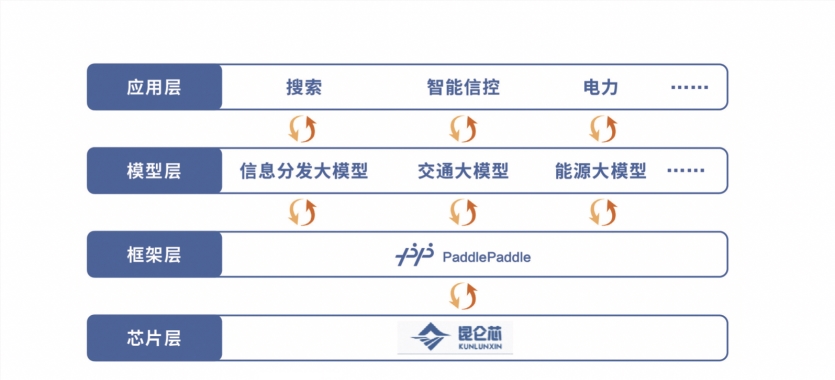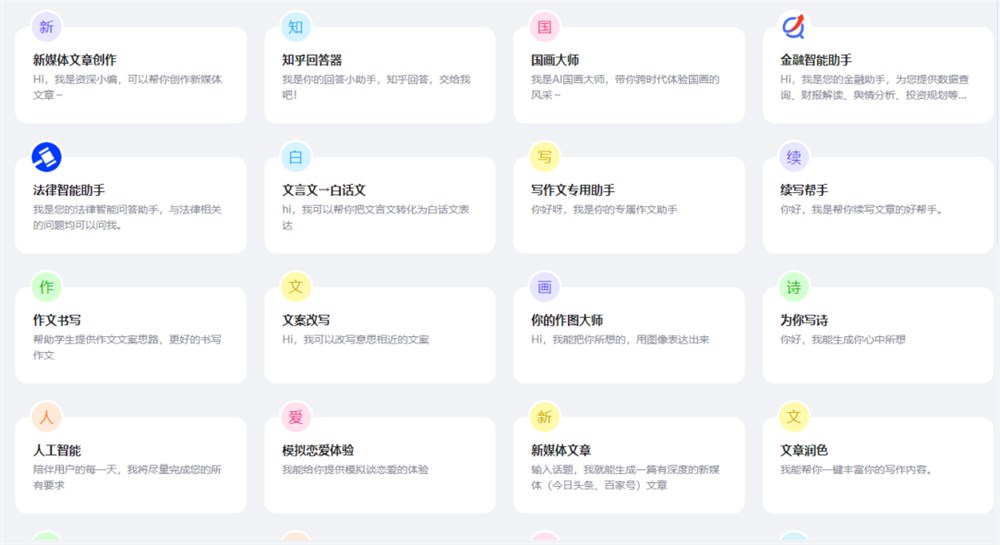Right now, the AI war is still going on.
With the emergence of ChatGPT, well-known Internet players have come out one after another toLarge ModelThe country has started to make some progress, and two or three hundred large models have been released. The trend of "cabbageization" is visible to the naked eye.
Correspondingly, the implementation of the large model does not seem to be going smoothly.
In 2024, it is imperative to break the industry deadlock:Whether it is the layout of the top Internet players or the clash of opinions at the WAVE SUMMIT+ Deep Learning Developers Conference 2023, it reflects that the AI battle is quietly changing. Applications will take over big models and will become the new "main battlefield" of the Internet.
In a nutshell, the end of the big model is application.
Betting on applications: the new consensus of giants
The application layer has become the next "gold mine" of the Internet.
When the Internet calmed down, we found that big models are important, but reflecting commercial value is more important, otherwise the goal of universal AI cannot be truly achieved.
Moving from technology-driven to value-driven and creating a prosperous ecosystem has gradually become a consensus in the industry.
Regarding this, it can be seen from the fact that Internet giants such as Robin Li, Zhou Hongyi, and Wang Xiaochuan all emphasized that application is the fertile ground for AI.
"We must go for native AI applications. Only when we make this thing, the model will be valuable." Li Yanhong believes that large models are not an opportunity for most people. "In the era of native AI, we need 1 million-levelAI native applications, but you don’t need 100 big models.”
As a result, volume applications have become the common choice of giants.
ByteDance launched "Doubao" and "Xiao Wukong", focusing on search and video editing; Tencent launched "Xiaoqin", "Weiban" and "AI Listen Together", focusing on social networking and music; JD launched "Jingyan" and Alibaba launched "Taobao Wenwen", both focusing on e-commerce shopping; Baidu was more thorough, not only reshaping all its products, but also launching AI native applications such as "Baidu GBI" and "Yun Yiduo"...

The application layer becomes the next "gold mine" of the Internet
An Internet observer told Zinc Scale: "In terms of technology, although Chinese Internet companies are a step behind, they have the potential to overtake others in terms of scenarios. Whether it is product reshaping or application innovation, there is a trend of letting a hundred flowers bloom."
The above-mentioned Internet observer further pointed out that although there are no killer applications yet, it does not affect the giants' efforts to increase their investment. After all, whether they can seize the high ground will determine their ecological niche in the future AI era.
In addition, related AI start-ups are also gearing up, and AI native applications are popping up like mushrooms after a rain, eager to replicate OpenAI's success, and the giants are also happy to bet on start-ups with unicorn potential to seek a win-win situation.
For example, MiniMax is a well-known AI startup that focuses on text-to-vision, text-to-speech, and text-to-text AI solutions. Its new round of $250 million financing received $40 million in investment from Tencent.
It is not difficult to see that the players are running forward.
Betting on the “track” instead of “horse racing”?
It should be noted that although the prospects for AI-native applications in 2024 are bright, the road may not be smooth.
First, the concept is overused.
There is currently no unified industry standard for what AI native applications are. Some copy the underlying logic of existing APPs, while others simply overlay AI technology.
As a result, users’ new experience is not good, and they may even have the illusion that it is “nothing special”.
In fact, AI native applications are based on AI technology, fully integrating the powerful capabilities of large models such as understanding, generation, logic, and memory, thereby stimulating a new user interaction experience.
Only by getting to the root of the problem can we release greater replacement demand and lower migration costs.
Secondly, the development threshold is high.
After all, big models are a new thing, and applications based on big models naturally have high thresholds, which pose certain obstacles to attracting developer participation.
The problem is that without a steady stream of developers joining, there will be no ecological prosperity.
How to lower the development threshold and allow AI native applications to move from large companies to the general public is a test of the industry's wisdom, which determines how fast and how far the industry can go.
Again, short-lived.
Before, the Miaoya camera suddenly became popular and became aAIGCfieldFirstAs an AI application that has gone viral, the popularity of MiaoYa Camera has gradually declined over time, and signs of it being a flash in the pan have become increasingly obvious.
An industry insider told Zinc Scale: "The technical barriers to the application of tools like (Miaoya Camera) are not high, and there are endless imitators. Coupled with the lack of user stickiness, it is reasonable that the market opened high and closed low."
The above-mentioned industry insiders further pointed out that the industry not only needs killer applications, but also long-lasting applications. Only in this way can users be pushed from the mobile era to the AI era.
The industry is also thinking about how to overcome these three hurdles, and "big models + plug-ins" have attracted the interest of giants.

Plugins are equivalent to variants of native AI applications
For example, Baidu launched the Lingjing Matrix platform to attract third-party developers to develop a variety of plug-ins, and through the prosperity of the plug-in ecosystem, it indirectly achieved the prosperity of the AI ecosystem.
To put it simply, the plug-in is equivalent to a variant of the AI native application, which is both the value entrance and the traffic entrance of the big model.
In this way, the entry threshold for developers is lowered, and the platform can also control the level of applications, avoid homogeneous competition, and more importantly, conduct "horse racing".
After all, it is difficult for an application to remain popular for a long time, but there are always applications that remain popular for a long time. Bet on the "track" rather than the "horse racing".
In short, there will still be many big models in 2024, but AI native applications will be more popular. Only by building a prosperous application ecosystem can big models come into play.
So, the giants have a new topic.